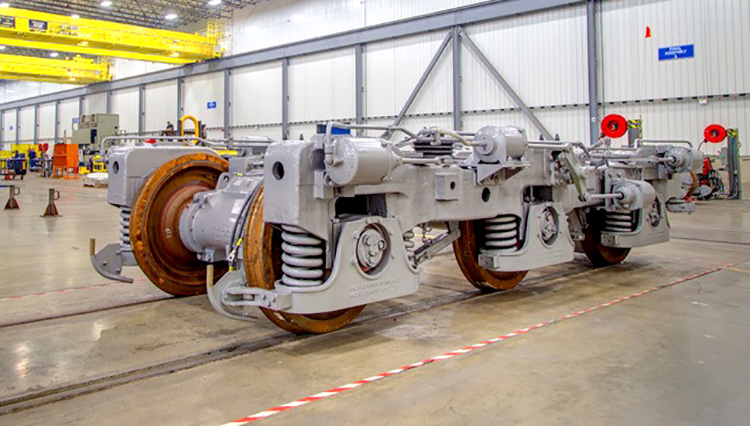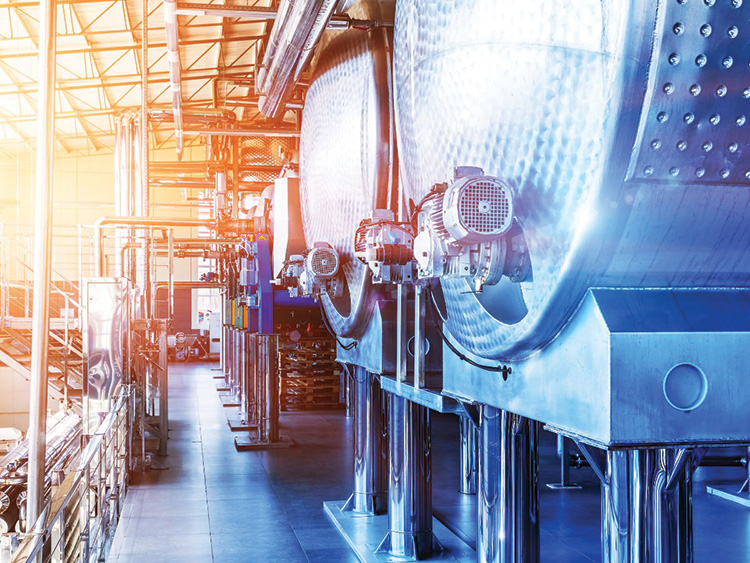The modernization of Indian Railways is an ongoing and comprehensive effort to upgrade one of the world’s largest railway networks. The Indian Railways, with its extensive reach and massive operational scale, plays a pivotal role in the country’s transportation and economy.
Over the years, several initiatives have been undertaken to modernize this vast network, encompassing various aspects such as technology, infrastructure, safety, passenger amenities, and sustainability. Here’s an overview of the key elements driving the modernization of Indian Railways:
Infrastructure Development
High-Speed Rail Corridors
India has also ventured into high-speed rail projects. The Mumbai-Ahmedabad High-Speed Rail (MAHSR) project, also known as the Bullet Train project, is one such initiative. It aims to introduce cutting-edge technology for rapid transit.
High-Speed Rail Corridors: Please elaborate
High-Speed Rail (HSR) corridors are an integral part of India’s plan to modernize its transportation infrastructure. These high-speed rail networks are designed to significantly reduce travel time between major cities, improve connectivity, and offer a more efficient and comfortable mode of transportation. The government has embarked on various high-speed rail corridor projects, aiming to bring cutting-edge technology and revolutionize long-distance travel within the country. The most prominent of these initiatives is the Mumbai-Ahmedabad High-Speed Rail (MAHSR) project, also known as the Bullet Train project.
Route and Connectivity: The MAHSR project will connect Mumbai, Maharashtra, and Ahmedabad, Gujarat, two major economic and industrial hubs. The corridor will span approximately 508 kilometers and is designed to significantly reduce the travel time between the two cities from several hours to just a couple of hours.
Technology and Speed: The high-speed rail on this corridor will use Shinkansen technology, known for its reliability, safety, and speed. The trains are capable of reaching speeds of up to 320 km/h (approx. 200 mph).
Infrastructure Development: The project involves the construction of dedicated tracks, ensuring that high-speed trains operate on separate lines, minimizing interference from other rail traffic. The corridor will also feature elevated tracks and tunnels to mitigate land acquisition challenges and environmental impact.
Economic Impact: The introduction of high-speed rail is expected to have a substantial economic impact by enhancing connectivity between major economic centers, fostering economic development, and generating employment opportunities.
Station Redevelopment
The station redevelopment program involved the modernization of major railway stations across India. It aimed to transform these stations into world-class transportation hubs equipped with modern facilities and amenities.
The government sought to leverage private investment through the PPP model to facilitate the redevelopment process. Private entities were expected to contribute to funding and implementing station upgrades, often in exchange for long-term operation and management rights.
The redevelopment plan encompassed the refurbishment and expansion of station buildings, improved passenger amenities, better connectivity, and advanced facilities for commuters.
The focus was on providing a more pleasant and convenient experience for passengers. This included better waiting areas, improved cleanliness, modern facilities, retail spaces, food courts, and entertainment areas within the stations.
The incorporation of modern technology was a significant part of the redevelopment process, such as the installation of Wi-Fi, smart information systems, digital ticketing, and real-time passenger information.
Measures were taken to enhance security through the installation of CCTV cameras, improved lighting, and other security infrastructure to ensure passenger safety.

Track Modernization
Upgrading tracks, including the implementation of modern signaling systems, is a priority for ensuring safe and efficient train operations. Track modernization within the Indian Railways is a crucial aspect of infrastructure enhancement aimed at ensuring safety, efficiency, and improved transportation services.
Upgrading tracks, switches, and crossings is vital for enhancing safety measures and preventing accidents. Modern tracks, combined with advanced signaling systems, allow for smoother train operations, reducing delays and optimizing train schedules. Upgraded tracks can support higher speeds, which is essential for accommodating high-speed trains. Additionally, improved tracks contribute to increased line capacity, allowing more trains to operate on a particular route.
Well-maintained and modern tracks reduce the need for frequent maintenance, which, in turn, minimizes downtime.
Dedicated Freight Corridors (DFCs)
The Government of India has been working on constructing dedicated freight corridors to segregate freight movement from passenger traffic. The Eastern and Western Dedicated Freight Corridors aim to speed up freight movement and decongest the existing railway network.
Technology Integration & Digitalization
Digitalization in Indian Railways has been a significant focus in transforming the operational and customer service landscape within the network. The integration of digital technology has led to various advancements in services, operations, and passenger amenities. Here’s an overview of the work done and future plans regarding digitalization in Indian Railways:
The implementation of online ticketing systems, such as the IRCTC (Indian Railway Catering and Tourism Corporation) website and mobile apps, has streamlined the ticket booking process for passengers. Passengers can track the real-time location and expected arrival times of trains through various apps and websites, providing them with accurate information about their journeys.
Introducing e-tickets and QR codes has made the ticketing process more efficient and convenient for passengers.
Several railway stations and trains offer WiFi services to passengers, enabling connectivity during their travel. The introduction of digital payment methods at railway stations and during ticket booking has made transactions easier and more secure for passengers.
The development of mobile applications for various railway-related services, including ticket booking, and information is a great help to passengers.

Safety and Security
Indian Railways has been actively planning and implementing various modern safety measures to enhance the safety and security of train operations and passenger travel. Some of the key modern safety measures being planned or implemented include:
Train Protection and Warning Systems (TPWS): TPWS is designed to prevent accidents caused by human error, automatically applying brakes to prevent collisions or over speeding.
Automatic Train Protection (ATP): ATP systems monitor and control train speeds, automatically slowing down or stopping a train if it exceeds the safe speed limit or approaches a danger zone.
Train Collision Avoidance System (TCAS): This system helps prevent collisions by providing warnings to train drivers and controlling train speed in the case of potential collisions.
Vigilance Control Devices: Devices that monitor and ensure the alertness of train drivers, preventing accidents caused by human error or drowsiness.
Track Circuiting and Interlocking: Advanced track circuiting and interlocking systems help control the movement of trains, ensuring safe distances between them and preventing collisions.
Use of Modern Materials: Upgrading tracks with more durable and modern materials to improve overall safety and reliability.
CCTV Cameras: Increasing the use of CCTV surveillance at stations, in trains, and along tracks to enhance security, monitor activities, and assist in incident investigations.
Emergency Communication Systems: Implementing efficient communication systems for passengers to quickly report emergencies or seek assistance.
Improved Safety Amenities: Upgrading safety amenities on trains and at stations, including fire extinguishers, emergency exits, and safety instructions for passengers.
Training Programs: Conducting regular training programs for railway staff on safety protocols, emergency responses, and the operation of safety equipment.
Public Awareness Campaigns: Raising awareness among passengers about safety protocols, emergency procedures, and the importance of adhering to safety guidelines.
Cybersecurity Measures
Data Security and Prevention of Cyber Threats: Implementing robust cybersecurity measures to protect critical railway systems from potential cyber threats or attacks.
Disaster Response and Management Plans: Developing and implementing comprehensive disaster management plans to respond effectively to accidents, natural disasters, or emergencies.
These modern safety measures aim to significantly improve the overall safety standards within the Indian Railways network, reducing the likelihood of accidents and ensuring a secure and reliable travel experience for passengers and personnel.
Sustainability and Eco-Friendly Practices
Indian Railways has been actively focusing on harnessing solar energy and implementing various green initiatives to reduce its carbon footprint and promote sustainability within its operations. Some of the plans and initiatives include:
Solar Power Projects: Installation of solar panels on railway buildings, stations, and along railway tracks to harness solar energy. These panels are utilized to generate electricity to power various railway operations, such as lighting, signaling, and other station facilities. Setting up solar panels on the rooftops of railway buildings and workshops to generate clean and renewable energy.
Solar-Powered Trains: Experimentation and research on developing trains powered by solar energy, exploring the possibility of integrating solar panels directly onto train coaches.
Other Green Initiatives
Bio-Toilets: The implementation of bio-toilets in trains, aimed at reducing pollution and promoting a cleaner environment by treating human waste and preventing it from being directly discharged onto tracks.
Energy-Efficient Practices: Implementing energy-efficient technologies and practices within railway operations to reduce overall energy consumption and promote sustainability.
Water Harvesting and Conservation: Incorporating rainwater harvesting systems at railway stations and installations to conserve water resources.
Waste Management: Efforts to promote waste segregation, recycling, and proper waste management practices to reduce environmental impact.
Afforestation and Greenery: Undertaking projects to plant trees and promote greenery along railway tracks, which not only enhances the environment but also helps in preventing soil erosion.
LED Lighting: Replacing conventional lighting with energy-efficient LED lights at stations and on trains to reduce energy consumption.
Indian Railways has been actively focusing on harnessing solar energy and implementing various green initiatives to reduce its carbon footprint and promote sustainability within its operations. Some of the plans and initiatives include:
Expansion of Solar Projects: Indian Railways aims to expand its solar power projects, increasing the capacity of solar installations across its network to reduce dependency on conventional energy sources.
Carbon Neutrality Targets: Setting ambitious targets to reduce carbon emissions and move towards carbon neutrality, aligning with global sustainability goals.
Electric Locomotives: Gradual replacement of diesel-powered locomotives with electric ones to reduce greenhouse gas emissions.
Sustainable Infrastructure Development: Incorporating sustainability measures in new infrastructure projects and development plans to ensure a greener and more eco-friendly railway network.
The focus on harnessing solar energy and implementing green initiatives underscores Indian Railways’ commitment to sustainability and environmental responsibility. These initiatives aim not only to reduce the environmental impact but also to contribute to India’s larger goals in combating climate change and promoting a greener future.
Financial Reforms
The Indian Railways had been actively exploring and engaging in various public-private partnership (PPP) initiatives to modernize, develop, and improve different aspects of the railway infrastructure and services. PPP has been a key strategy to bring in private investment, expertise, and innovation into the Indian Railways sector. Here are some of the notable advancements and initiatives related to PPP:
The station redevelopment program witnessed progress through PPP models. Several major stations were being transformed under PPP agreements, where private entities were involved in the redevelopment process to create world-class railway stations.
The construction of dedicated freight corridors, namely the Eastern Dedicated Freight Corridor (EDFC) and Western Dedicated Freight Corridor (WDFC), involved PPP models. Private entities were involved in different aspects, including funding, construction, and operation of these corridors, aiming to improve freight movement and reduce congestion on existing tracks.
The MAHSR project, often referred to as the Bullet Train project, is being developed under a PPP model. This initiative involves collaboration between the Indian government and Japan, with a significant portion of the funding and technology coming from Japanese sources.
Indian Railways has been actively seeking further PPP opportunities to modernize its network, improve passenger services, and expand its infrastructure. Future plans might include more station redevelopment projects, new high-speed rail corridors, modernization of signaling and train control systems, and other critical infrastructure developments.
The engagement of private investment and expertise through PPP in the railway sector aims to bring in innovation, efficiency, and technological advancements, contributing to the overall growth and modernization of Indian Railways.
Conclusion
The modernization of Indian Railways is an extensive and continuous process aimed at making the network safer, more efficient, and more technologically advanced. While several advancements have been made, there’s a continued need for sustained investment, innovation, and strategic planning to achieve the desired level of modernization in line with global standards. The commitment to this process is crucial for the growth and development of India’s transportation sector.



